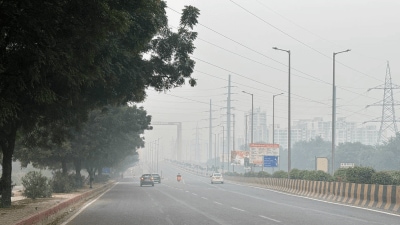The end of distress
Vidarbha’s problems are real and palpable. The solution has to be all-India reform

Prime Minister Manmohan Singh is currently visiting Vidarbha district in Maharashtra. The countrywide interest in the relief package he is expected to unveil to address farmer distress in the area highlights the importance the problem of farmer suicides has acquired in recent times. Maharashtra has seen a four-fold increase in farmer suicides in less than ten years. The number has risen from 1,083 in 1995 to 4,147 in 2004. Even though all-India data does not indicate the intensity of the problem, more detailed data reveals that in some districts in the country there has been a sharp increase in farmer suicides.
A two-pronged approach needs to be followed to address the problem. First, there must be measures that address the specific problems faced by the region. Second, there must be a change in agriculture policies at a broader level. While the government may find it easy to dish out relief packages, the really difficult job is to address wider policy issues and to divert Central government spending on agriculture from food subsidy to public investment in irrigation and rural infrastructure. Having addressed the proximate causes, it is to this that the prime minister must now turn if he wants to prevent more farmers from killing themselves.
Some people like to brush the problem of farmer suicides aside as media hype. At first blush it may appear that they are right. For every 100 urban Indian men who kill themselves, there are merely 103 rural Indian men who commit suicide. This figure relates to data for 2001 from Accidental Deaths and Suicides in India, an annual publication of the ministry of home affairs, where the data on suicides is available. Anyone looking at this number would not find a significant change in recent years as suicides among both urban and rural males have increased. While in 1975, 9.7 men in every one lakh Indian men committed suicide, by 2001 this number had risen to 14.
But such a cursory look at the data is a mistake. To understand the magnitude of the problem, it is more meaningful to look specifically at the suicide rate for farmers. This number is available from 1995. A paper by Srijit Mishra on suicide mortality rates shows that while in 1995, for every one lakh farmers 9.7 farmers committed suicide, in a short span of six years this number had risen to 16.2. What is even more striking is how the suicide mortality rate has risen sharply in some states. For Andhra Pradesh it has risen from 13.6 to 25.6 over this period. For Karnataka it rose from 33.7 to 44.5, and for Kerala from 127.6 to 161.8. The ratio for Maharashtra has increased from 14.7 in 1995 to 44.1 over in 2001 and further to 57 in 2004.
The problem may not be an all-India phenomenon but, clearly, it is quite acute in some states. Indeed, even within these states there are some regions where farmer suicides have risen even more sharply. Between 2001 and 2004 the divisions of Amravati and Nagpur witnessed the highest suicide rates for males at 115.6 and 55.5, respectively. This data reveals what the all-India data hides. That there is no denying that there are certain pockets of rural India where there has been a sharp increase in farmer distress.
The question of how to solve the problem is far more complex. It is not easy to pin-point the causes of the suicides. Indebtedness is very high on the list. Eighty-five per cent of the farmers who committed suicide were highly indebted. Most of these were small and marginal farmers in rainfed areas that lack canal irrigation. They try to grow cash crops and need water, seeds, fertilisers, pesticides and credit. A number of microlevel studies have been done and most of them indicate that the primary reason for taking the loan was for crop inputs. This is in contrast to the old India where loans were taken for non-farm purposes like weddings. In 60 to 70 per cent of the cases the loan is taken from a private moneylender. Farmers’ hopes often get dashed when despite boring wells they do not find water, when the harvest is bad, or when a good harvest results in low prices. Two to three continuous years of distress can push many farmers to suicide.
The above are the proximate causes of suicide. Other than addressing the immediate causes, the government also has to address the mistakes in agriculture policies at a much broader level. Productivity in Indian agriculture has been falling as a consequence of policy mistakes. While there are a number of measures like the development of weather derivatives and futures markets, institutional credit and free movement of agricultural goods that can make a big difference, one of the crucial constraints lies in the lack of public investment in agriculture. Since a large chunk of the money spent on agriculture gets spent on food subsidy, which mainly goes directly to surplus-producing cereal farmers in Harayana, Punjab and UP, there is little scope for the government to spend on investment in irrigation in the semi-arid zones or rainfed areas where distress levels are among the highest today.
The political economy of cereal farming has produced enormous distortions. In 1991 the central government spent a total of Rs 239 crore on capital expenditure in agriculture. It spent a total of Rs 223 crore on plan expenditure on irrigation and flood control. But it spent Rs 2,450 crore on food subsidy. Over the years the situation worsened. The expenditure on food subsidy has increased ten-
-fold. On irrigation and public investment it has barely increased. In 2005 the central government spent a total of Rs 176 crore on capital expenditure in agriculture. It spent a total of Rs 458 crore on irrigation and flood control. But it spent Rs 25,800 crore on food subsidy.
Irrigation in rainfed areas is left to private initiative. The government clearly needs to come up with better policies for dry land agriculture. This cannot be done unless there is a shift away from a focus on wheat and rice, which dominates government spending and agriculture policies today. But unless this is done, the effectiveness of relief measures for distressed farmers will remain limited.



- 01
- 02
- 03
- 04
- 05




























